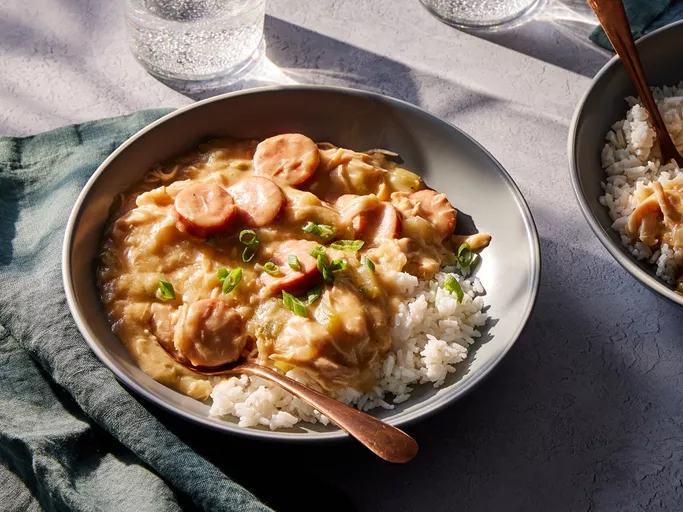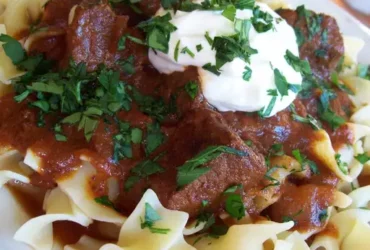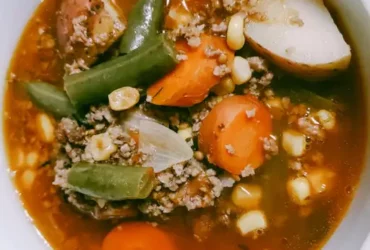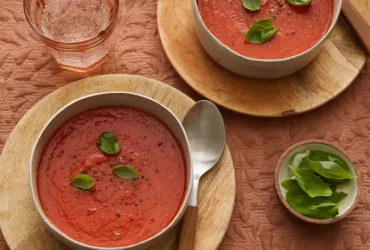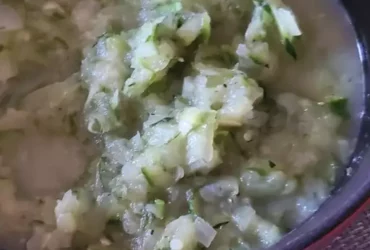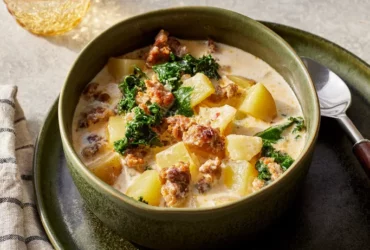Ingredients
Cajun Spice Blend
Cajun Spice Blend is a staple seasoning in many Louisiana dishes, particularly in traditional Cajun and Creole cuisine. This aromatic blend typically consists of a combination of herbs and spices that add depth and heat to various recipes.
The basic ingredients that make up a standard Cajun Spice Blend can vary depending on the recipe or personal preference, but it often includes a mixture of the following:
- Paprika: adds color and smokiness
- Cayenne pepper: contributes heat and spiciness
- Black pepper: provides a sharp, pungent flavor
- Garlic powder: adds a savory, slightly sweet flavor
- Onion powder: enhances the overall flavor with a subtle sweetness
- Thyme: contributes a slightly earthy and herbal note
- Oregano: adds a pungent, earthy flavor
- Red pepper flakes: add additional heat and spiciness
The proportions of these ingredients can vary depending on the desired level of heat and flavor. Some recipes may include additional ingredients like cumin, coriander, or celery seed to round out the blend.
In the context of the Cajun Chicken and Sausage Gumbo Recipe, the Cajun Spice Blend is used to add depth and heat to the dish. The spice blend is often combined with other ingredients like onions, bell peppers, and okra to create a rich and flavorful gumbo base.
When using a store-bought or homemade Cajun Spice Blend in cooking, it’s essential to adjust the amount according to personal taste preferences. Some people may prefer a milder flavor, while others enjoy a bolder, spicier taste.
Cajun Spice Blend is not just limited to gumbo recipes; it can be used as a seasoning for various dishes like jambalaya, étouffée, and roasted meats. The versatility of this spice blend makes it an essential component in many Louisiana-style cookbooks and recipes.
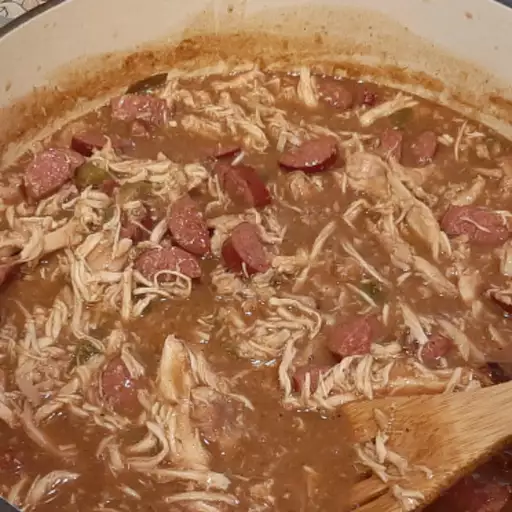
1 tablespoon paprika
Paprika is a staple spice in many international cuisines, including Hungarian, Spanish, and Mexican cooking. In the context of this Cajun Chicken and Sausage Gumbo recipe, paprika serves a crucial role in adding depth and smokiness to the dish. The specific ingredient called for here is 1 tablespoon of paprika.
The type of paprika used can greatly affect the flavor profile of the gumbo. Sweet paprika is often used for its mild, sweet flavor and would be an acceptable substitute if you don’t have smoked paprika on hand. However, if possible, it’s recommended to use smoked paprika (also known as smoked sweet paprika or pimentón) due to its rich, smoky flavor that pairs well with the dark roux, chicken, and sausage in this gumbo.
Paprika has several potential health benefits, making it a great addition to your cooking repertoire. It is high in antioxidants and contains vitamin B6, which plays a crucial role in many bodily processes including immune function and energy metabolism. Paprika also contains capsaicin, the compound that gives chili peppers their heat.
When using paprika, be sure not to overdo it as this spice can quickly overpower other flavors in your dish. The 1-tablespoon measurement for this recipe should provide a good balance of smoky and savory notes without overwhelming the other ingredients. You can adjust this amount to taste based on your personal preference.
In addition to its flavor, paprika has cultural significance as well. In many African cultures, including West Africa where the term “gumbo” originated, ground peppers and spices are used to add depth and warmth to stews and soups. The use of smoked paprika in this recipe serves as a nod to these cultural roots.
When storing paprika, be sure to keep it away from direct sunlight and moisture. Ground paprika can lose its flavor and aroma if exposed to heat or light for extended periods. This will ensure that your paprika remains potent and ready to use in future recipes.
1 tablespoon garlic powder
The ingredients used to make a delicious Cajun Chicken and Sausage Gumbo are numerous, and each one plays a vital role in creating this mouth-watering dish.
Here’s a breakdown of some of the essential ingredients you’ll need:
- 1 lb boneless, skinless chicken breast or thighs, cut into bite-sized pieces
- 1 lb smoked sausage, such as Andouille or kielbasa, sliced
- 2 medium onions, chopped
- 3 stalks celery, chopped
- 3 cloves garlic, minced (and this is where our focus lies)
- 1 tablespoon garlic powder – This adds a depth of flavor and a subtle richness to the gumbo, allowing the other ingredients to shine.
- 1 teaspoon ground cumin
- 1 teaspoon paprika
- 1/2 teaspoon cayenne pepper (optional)
- 1/2 teaspoon salt
- 1/4 teaspoon black pepper
- 1 large bell pepper, chopped
- 2 medium tomatoes, diced or 1 can of diced tomatoes
- 4 cups chicken broth
- 2 tablespoons filé powder (optional)
- Cooked rice, for serving
The garlic powder is added to the pot with other aromatics like onions, celery, and bell pepper, creating a flavorful foundation for the gumbo. It’s then simmered with the chicken, sausage, and vegetables in a rich chicken broth.
As you can see, the ingredients used in Cajun Chicken and Sausage Gumbo are quite diverse, but they all come together to create a hearty and delicious dish that’s sure to please even the pickiest eaters!
1 tablespoon onion powder
The ingredients for this recipe are as follows:
Cajun Seasoning
- 1 tablespoon onion powder
- 1 tablespoon paprika
- 1 teaspoon cayenne pepper (or more to taste)
- 1 teaspoon dried thyme
- 1/2 teaspoon black pepper
- 1/4 teaspoon cumin
- 1/4 teaspoon salt
The onion powder is a key component of the Cajun seasoning blend. It adds depth and a subtle sweetness to the dish, without overpowering the other flavors.
Oils and Fats
- 1/4 cup vegetable oil or canola oil
- 2 tablespoons butter (optional)
The vegetable oil is used for sautéing the ingredients, while the butter adds a rich flavor to the gumbo.
Aromatics and Vegetables
The following aromatics and vegetables are needed for this recipe:
- 1 large onion, chopped (about 3 cups)
- 5 stalks celery, sliced (about 3 cups)
- 3 cloves garlic, minced (about 1 tablespoon)
- 2 medium bell peppers, chopped (any color, about 3 cups)
The onion, celery, and bell peppers form the classic “holy trinity” of Cajun cooking. They add a depth of flavor and texture to the gumbo that is essential to its character.
Proteins
- 1 pound boneless, skinless chicken breast or thighs, cut into bite-sized pieces
- 1 pound smoked sausage (such as Andouille), sliced
The chicken and sausage are the main proteins in this gumbo recipe. The chicken adds lean protein and texture, while the sausage provides a rich, meaty flavor.
Roux and Thickeners
- 1 cup all-purpose flour (about 8 ounces)
- 1/4 cup vegetable oil or canola oil (for making the roux)
- 1 teaspoon filé powder (optional, for thickening and flavor)
The roux is a mixture of flour and fat that serves as the thickener and base for this gumbo recipe. The filé powder adds an earthy, herbal flavor to the dish.
Broth and Seasonings
- 4 cups chicken broth (homemade or store-bought)
- 1 teaspoon dried parsley
- 1/2 teaspoon paprika
- 1/2 teaspoon cayenne pepper (optional)
The chicken broth serves as the liquid base for this gumbo, while the seasonings add a savory flavor and aroma.
Herbs and Spices
- 1 teaspoon dried thyme
- 1/2 teaspoon black pepper
- 1/4 teaspoon cumin
- 1/4 teaspoon salt
The herbs and spices add depth and complexity to this gumbo recipe, while the thyme adds a slightly minty flavor.
1/2 teaspoon cayenne pepper
The ingredient list for this Cajun Chicken and Sausage Gumbo recipe includes a variety of spices, herbs, and other essentials that come together to create a rich and flavorful dish.
One of these ingredients is cayenne pepper, which is added in the amount of 1/2 teaspoon. Cayenne pepper is a type of hot pepper that is commonly used in many recipes for its spicy kick and ability to add depth and warmth to dishes.
To understand the role of cayenne pepper in this recipe, it’s helpful to consider what types of foods pair well with it. Cayenne pepper is often associated with spicy dishes from various cultures, particularly those from Latin America and the Southern United States. It can be used to add heat to a variety of different recipes, from soups and stews to sauces and marinades.
In this particular recipe for Cajun Chicken and Sausage Gumbo, cayenne pepper is just one part of the overall spice blend that helps to create its distinctive flavor. The 1/2 teaspoon amount used in the recipe can be adjusted according to individual taste preferences, but it’s worth noting that a little cayenne pepper goes a long way when it comes to adding heat and depth to a dish.
Some potential reasons for using cayenne pepper in this recipe include its ability to:
- Add a spicy kick to the dish, which can help to balance out the richness of the chicken and sausage
- Enhance the overall depth and warmth of the flavor, particularly when combined with other spices like thyme and oregano
- Complement the smoky flavor of the sausage and the savory flavor of the chicken
In summary, the 1/2 teaspoon amount of cayenne pepper used in this recipe for Cajun Chicken and Sausage Gumbo is a key ingredient that helps to create its distinctive flavor. By understanding the role of cayenne pepper and how it can be used to add heat and depth to dishes, cooks can experiment with new recipes and flavors and create unique culinary experiences.
1/2 teaspoon thyme
The Cajun Chicken and Sausage Gumbo recipe makes use of a variety of ingredients to create its rich, flavorful broth and hearty filling. The spice blend that gives this gumbo its distinctive flavor includes a number of herbs and spices, each playing an important role in the final taste of the dish.
One of the key ingredients in the Cajun seasoning mix is thyme, added in the form of 1/2 teaspoon. Thyme’s strong, slightly minty flavor adds depth to the broth and complements the other seasonings nicely, balancing out their boldness with its subtle undertones. Thyme also pairs well with the rich flavors of the sausage and chicken, rounding out the overall taste experience.
When selecting a thyme for your Cajun Chicken and Sausage Gumbo recipe, it’s essential to choose fresh sprigs or dried thyme that is free of any bitterness or off-flavors. Dried thyme can be just as effective as fresh, but ensure that the quality is high and there are no signs of staleness.
Thyme’s unique properties also make it a popular ingredient in many traditional dishes beyond gumbo. It’s often used to add flavor to soups, stews, and meat dishes, where its aromatic qualities enhance the overall taste experience. In this context, thyme’s contribution to the Cajun Chicken and Sausage Gumbo recipe serves as another reminder of its versatility and value in cooking.
Ultimately, the presence of 1/2 teaspoon of thyme in the Cajun seasoning mix is a vital component that helps elevate this gumbo from ordinary to extraordinary. By balancing out the bold flavors of the other seasonings and complementing the rich tastes of the sausage and chicken, thyme adds an undeniable depth and complexity to each bowlful.
1/4 teaspoon black pepper
In order to prepare a delicious and authentic Cajun Chicken and Sausage Gumbo, it’s essential to select the right ingredients. The foundation of this dish lies in the combination of aromatic spices, flavorful meats, and vegetables that come together to create a rich and savory broth.
One of the key ingredients in this recipe is black pepper, which serves as a crucial seasoning component. When using black pepper in cooking, it’s essential to note that a little goes a long way due to its intense flavor.
In the context of this Cajun Chicken and Sausage Gumbo Recipe, 1/4 teaspoon of black pepper is an ideal amount to start with. This small quantity will allow the other flavors in the dish to shine while providing just enough heat and depth to the broth.
The use of high-quality black peppercorns will make a significant difference in the overall taste of your gumbo. Freshly ground black pepper, for instance, will release more oils and flavor compounds compared to pre-ground pepper.
It’s worth noting that black pepper pairs well with an array of ingredients commonly found in Cajun cuisine, such as garlic, onion, celery, and spices like thyme and oregano. By combining these elements with the rich flavors of chicken, sausage, and the long-simmered broth, you’ll create a gumbo that’s both authentic and satisfying.
When adding black pepper to your dish, be sure to distribute it evenly throughout the ingredients to ensure a consistent flavor profile. You can also adjust the amount of pepper to taste, depending on personal preference for heat level.
The 1/4 teaspoon measure of black pepper in this recipe will contribute to the development of the gumbo’s characteristic “dark roux” flavor, which is achieved by combining flour and fat (in this case, oil) to create a rich, nutty paste. This roux serves as the foundation for the dish’s thick and velvety texture.
By incorporating black pepper into your Cajun Chicken and Sausage Gumbo recipe, you’ll be able to experience the authentic flavors of Louisiana’s rich culinary heritage in the comfort of your own home.
Instructions
Cooking the Chicken and Sausage
To make a mouth-watering Cajun Chicken and Sausage Gumbo, it’s essential to follow a set of clear instructions that guide you through the process of cooking the chicken and sausage.
The first step in preparing the chicken is to season it with a blend of spices, which typically includes paprika, garlic powder, onion powder, cayenne pepper, salt, and black pepper. You should sprinkle this seasoning mixture evenly over both sides of the chicken breasts or thighs, depending on your preference.
Next, heat about 1-2 tablespoons of oil in a large skillet over medium-high heat. Once the oil is hot, add the seasoned chicken to the skillet and sear it for about 5-7 minutes on each side, or until it reaches an internal temperature of at least 165°F (74°C). Remove the cooked chicken from the skillet and set it aside to be added to the gumbo later.
While the chicken is cooking, prepare the sausage. Traditionally, a combination of smoked sausage and Andouille sausage are used in Cajun gumbo recipes. Slice both types of sausage into 1/4-inch thick rounds, and then brown them in the same skillet that was used for the chicken. Brown the sausage over medium-high heat, breaking it up with a spoon as needed, until it’s nicely caramelized and crispy.
After browning the sausage, remove it from the skillet and set it aside with the cooked chicken. Be sure to leave any accumulated drippings in the skillet, as they will add flavor to the gumbo.
The next step is to sauté the aromatics, which typically include onion, bell pepper, and celery. These vegetables should be finely chopped before being added to the skillet with a bit of oil over medium heat. Cook them until the onion is translucent and the other vegetables are tender, stirring occasionally.
Once the aromatics have cooked, add a combination of all-purpose flour and filé powder (ground sassafras leaves) to thicken the gumbo. Stir this mixture constantly for about 1-2 minutes, allowing it to cook and darken in color before adding any liquid ingredients.
The next step is to gradually add a combination of chicken broth, water, and tomatoes to the skillet with the thickened roux mixture. Bring the mixture to a boil, then reduce the heat to low and let it simmer for about 10-15 minutes, or until the gumbo has thickened to your desired consistency.
Finally, add the cooked chicken and sausage back into the pot, along with any accumulated juices from cooking them earlier. Season the gumbo with salt and black pepper to taste, then serve it hot over a bed of steamed rice for an authentic Cajun experience.
In a large castiron pot or Dutch oven, cook 1 pound of boneless chicken breasts and 1 pound of smoked sausage over mediumhigh heat until browned
When following a recipe, it’s essential to understand the role of instructions in guiding the cooking process. In this case, the instructions are clear and concise, allowing anyone with basic cooking skills to prepare a delicious Cajun Chicken and Sausage Gumbo.
The first instruction, “In a large castiron pot or Dutch oven,” indicates that the cook should use a specific type of cookware. This is crucial because the material and size of the pot can affect the cooking time and overall quality of the dish. The choice of a large castiron pot or Dutch oven allows for even heat distribution and ample room to accommodate the ingredients.
The next step, “cook 1 pound of boneless chicken breasts and 1 pound of smoked sausage over mediumhigh heat,” outlines the cooking method. The use of boneless chicken breasts ensures that the meat cooks evenly and quickly. The addition of smoked sausage, which adds a rich, smoky flavor to the gumbo, is also specified.
The instruction to “cook until browned” indicates that the cook should continue cooking until the chicken and sausage are nicely browned. This process typically takes around 5-7 minutes, depending on the heat level and the thickness of the meat. The browning process is essential because it creates a flavorful crust on the meat, which enhances the overall taste of the gumbo.
Throughout this recipe, the instructions are clear and easy to follow. By paying close attention to each step and using the recommended ingredients and cooking techniques, anyone can prepare a mouth-watering Cajun Chicken and Sausage Gumbo that is sure to impress family and friends.
Remove from heat and set aside
The first step in following any recipe, including this Cajun Chicken and Sausage Gumbo Recipe, involves carefully reading through all the instructions before commencing with the task at hand.
This initial review is crucial to understanding the overall process involved, as well as recognizing any specific steps that require advance preparation or specialized equipment. It allows the cook to mentally prepare for the sequence of actions needed and to identify any potential obstacles or challenges that may arise during the cooking process.
Upon reviewing the instructions, the first actual step in this Cajun Chicken and Sausage Gumbo Recipe is “Remove from heat.” This directive instructs the cook to immediately stop applying heat to whatever ingredient or pot of ingredients they are currently working with. This action prevents further cooking, charring, or burning of the food item.
The purpose behind removing an ingredient or mixture from heat varies depending on its composition and intended use within the recipe. In this case, it may be necessary because the food item has reached a point where any additional heat could compromise its texture, flavor, or nutritional content.
Following removal of an ingredient from heat, the next step is typically to set it aside for a period of time. This directive involves placing the cooled or partially cooled ingredient in a safe location where it cannot be accidentally disturbed or contaminated by other foods, utensils, or surfaces. Setting aside allows the food item to rest and relax, reducing its sensitivity to external factors such as temperature fluctuations or physical impacts.
It’s worth noting that not all ingredients require setting aside after removal from heat; some may need immediate attention for further processing. However, in the case of Cajun Chicken and Sausage Gumbo, allowing certain components to rest is an essential step toward achieving optimal flavor profiles and textures.
The decision on how long to set a particular ingredient or mixture aside can depend on its nature, as well as the requirements of the recipe. In some cases, it may be necessary to refrigerate or freeze the component for later use, while in other scenarios, merely allowing it to sit at room temperature for an extended period is sufficient.
Ultimately, understanding and following the instructions provided with any recipe is key to producing high-quality results, which can often make all the difference between a truly enjoyable dining experience and one that falls short of expectations.
Preparing the Roux and Gumbo
Making the Roux
To prepare an authentic Cajun Chicken and Sausage Gumbo, it’s essential to start with a rich and flavorful roux.
A roux is a mixture of flour and fat used as a thickener or to add flavor to soups and stews. In the case of gumbo, the roux serves as the foundation for the entire dish.
Preparing the Roux
To make a roux, you will need:
- 1 cup of all-purpose flour
- 1/2 cup of vegetable oil or lard (lard is traditional in gumbo)
Step-by-Step Instructions for Preparing the Roux
Begin by melting the fat in a large, heavy pot over medium heat.
Once the fat has melted, add the flour and whisk it into the oil to create a smooth paste.
The Maillard Reaction: Understanding the Color Change
A roux goes through several stages as it cooks:
- White: The initial stage where the flour absorbs the fat and becomes a pale white color.
- Blond: As the roux continues to cook, it will start to take on a light yellow color.
- Brown (or dark brown): This is the ideal color for a gumbo roux. The Maillard reaction, a chemical reaction between amino acids and reducing sugars, causes the roux to darken in color and develop a rich, nutty flavor.
It’s essential to stir the roux constantly as it cooks to prevent it from burning or developing hotspots. This process can take anywhere from 20-30 minutes, depending on the heat level and your desired color.
Making the Gumbo
Once you’ve achieved the perfect roux color, it’s time to start building your gumbo. You will need:
- Cooked chicken (you can use boneless, skinless chicken breasts or thighs)
- Cooked sausage (such as Andouille or kielbasa)
- Vegetables (onion, bell pepper, celery, and garlic)
- Tomatoes
- Gumbo filé powder (optional)
Step-by-Step Instructions for Making the Gumbo
- In a large pot, combine the cooked roux, chicken, sausage, vegetables, and tomatoes. Stir until everything is well combined.
- Add enough water to cover the ingredients and bring the mixture to a boil.
- Reduce the heat to low and simmer for at least 30 minutes, allowing the flavors to meld together.
The Finishing Touches
A traditional Cajun gumbo is finished with filé powder, which is made from ground sassafras leaves. This adds a unique flavor and texture to the dish.
- Add 1-2 teaspoons of filé powder towards the end of cooking time (about 10-15 minutes before serving)
Ladle the gumbo into bowls and serve over cooked rice. Enjoy!
In a separate pot, combine equal parts oil and flour to create a roux, cooking until dark brown, almost black
To prepare the Roux, a crucial component of authentic Cajun cuisine, you will need to combine equal parts of oil and FLOUR in a separate pot. The ideal ratio for a dark roux is 1:1, which means using one part of oil and one part of flour.
The key to achieving the perfect roux lies in its color, which should be almost black when completely cooked. To achieve this, you must stir constantly over medium-low heat, allowing the mixture to cook slowly and evenly.
As the roux cooks, it will go through several stages of transformation, starting with a light brown color and eventually darkening to a rich, mahogany hue. Be cautious not to burn the roux, as this can give your gumbo an unpleasant flavor.
To create the roux, you can use any type of oil with a high smoke point, such as vegetable or peanut oil. As for the flour, make sure it’s CAPPUCCINO-colored, which is the preferred color for a dark roux in Cajun cuisine.
Once your roux has reached the desired color, remove it from heat and set it aside to cool slightly. This will prevent it from burning or sticking to the bottom of the pot.
In this particular recipe, you’ll be using the ROUX as a thickening agent in your Cajun Chicken and Sausage Gumbo. The dark roux will add depth and richness to the dish, along with a subtle smokiness that’s characteristic of authentic gumbo.
Stir in 1 cup of allpurpose flour and cook for an additional minute
The key to a rich and flavorful gumbo lies in preparing the roux, which is a mixture of flour and fat that serves as the foundation for the dish.
To prepare the roux, first melt 1/2 cup of vegetable oil or other fat in a large cast-iron pot over medium heat.
Once the oil is hot and shimmering, gradually add in 1 cup of all-purpose flour, stirring constantly with a wooden spoon or whisk to prevent lumps from forming.
The roux will start to darken and thicken as it cooks, developing a nutty aroma that signals its readiness for use in the gumbo.
Stir in 1 cup of all-purpose flour and cook for an additional minute, stirring constantly to ensure even cooking.
Some people prefer their roux to be dark, almost chocolate-like in color, while others prefer it lighter. The choice is up to you.
To test the doneness of the roux, use a wooden spoon or spatula to scoop up some of the mixture and let it cool slightly. If it’s still gritty or doesn’t hold its shape when cooled, continue cooking the roux in short intervals until it reaches your desired level of darkness.
Once the roux has reached the right consistency, remove it from the heat and set it aside to cool slightly. It will thicken further as it cools.
Now that you’ve prepared your roux, it’s time to add in the remaining ingredients for your Cajun Chicken and Sausage Gumbo Recipe. Let’s get started!
Here is a step-by-step list of how to prepare your roux
- Melt 1/2 cup of vegetable oil or other fat in a large cast-iron pot over medium heat.
- Add in 1 cup of all-purpose flour and stir constantly with a wooden spoon or whisk to prevent lumps from forming.
- Cook the roux for 5-7 minutes, stirring occasionally, until it reaches your desired level of darkness.
- Stir in 1 cup of all-purpose flour and cook for an additional minute, stirring constantly to ensure even cooking.
Some tips to keep in mind when preparing your roux
- Use a cast-iron pot: This type of pot retains heat well and allows for even cooking.
- Stir constantly: To prevent lumps from forming, stir the roux constantly as you cook it.
- Be patient: Preparing a good roux takes time, so don’t rush through the process.
- Best Lusha Alternatives for 2025 - April 22, 2025
- Best Overloop Alternatives for 2025 - April 22, 2025
- Best 6sense Alternatives for 2025 - April 22, 2025

